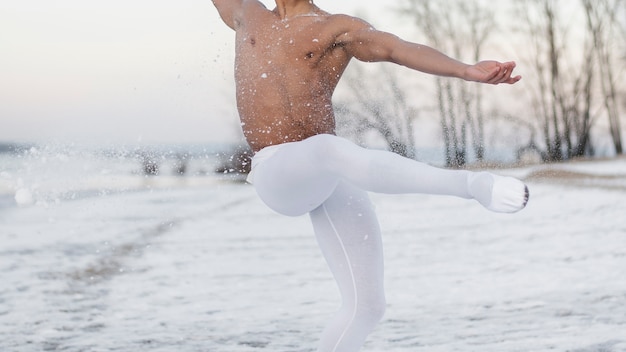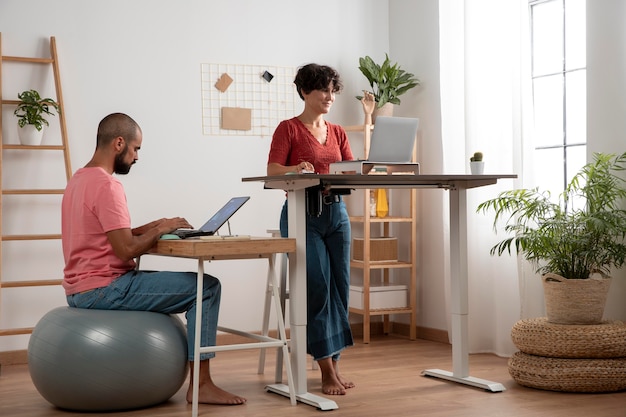30 Joint-Sabotaging Mistakes You're Making in Your Daily Routine (And How to Fix Them with Minimal Gear)
Your joints are the unsung heroes of everyday movement. Whether you're climbing stairs, lifting groceries, or playing with kids, your knees, hips, shoulders, and wrists work silently—until something goes wrong. Joint pain doesn't always come from intense workouts or aging; often, it's the result of small, repeated mistakes woven into real-life routines.
The good news? You don’t need a gym membership or expensive equipment to protect your joints. With a few smart adjustments, you can build joint resilience into your daily life—no matter how busy your schedule.
Why Joint Protection Matters—Especially in Winter
Cold weather can increase joint stiffness and discomfort, particularly for people with arthritis or past injuries. Reduced physical activity during winter months also contributes to muscle weakness, which puts more pressure on joints. According to recent health insights, many common winter exercise habits—like skipping warm-ups or exercising in cold environments without preparation—can silently damage joints over time.

Mistake #1 to #10: Poor Movement Habits
- Skipping warm-ups – Jumping into activity without preparing muscles increases joint strain.
- Slouching at your desk – Poor posture misaligns the spine and stresses neck and shoulder joints.
- Wearing unsupportive shoes – Lack of arch support transfers impact directly to knees and hips.
- Repetitive motions without breaks – Typing, gardening, or lifting without variation causes overuse injuries.
- Improper lifting technique – Bending at the waist instead of the knees overloads spinal joints.
- Standing or sitting too long – Static positions reduce joint lubrication and circulation.
- Ignoring early pain signals – Discomfort is a warning sign, not something to push through.
- Over-relying on one side of the body – Creates muscular imbalances and uneven joint wear.
- Using incorrect form during home workouts – Especially in squats, lunges, or push-ups.
- Skipping cooldowns and stretching – Muscles stay tight, increasing joint compression.
Mistake #11 to #20: Lifestyle and Environmental Factors
- Dehydration – Cartilage is mostly water; low hydration reduces shock absorption.
- Poor diet lacking in anti-inflammatory foods – Diets high in sugar and processed fats increase joint inflammation.
- Exercising in cold, unwarmed spaces – Cold muscles and joints are more prone to injury.
- Not adjusting workouts for weather changes – Winter demands slower starts and longer warm-ups.
- Overtraining without recovery days – Joints need time to repair micro-damage.
- Sleep deprivation – Poor sleep slows tissue repair and increases pain sensitivity.
- Carrying excess weight – Every extra pound adds 4x the pressure on knees during walking.
- Using furniture that doesn’t support posture – Sofas and chairs that are too low or soft strain hips and back.
- Texting or browsing with arms unsupported – Leads to 'tech neck' and shoulder joint strain.
- Not using assistive tools when needed – Backpacks, carts, or ergonomic tools reduce joint load.

Mistake #21 to #30: Exercise and Recovery Errors
- Only doing high-impact exercises – Running or jumping without low-impact variety stresses joints.
- Neglecting strength training – Strong muscles support and stabilize joints.
- Assuming rest is always best for joint pain – Gentle movement often helps more than complete inactivity.
- Not varying your exercise routine – Repetitive stress leads to overuse injuries.
- Stretching cold muscles – Increases risk of strain; always warm up first.
- Using worn-out workout gear – Old shoes or mats lack cushioning and support.
- Ignoring balance and stability work – Poor balance increases fall risk and joint trauma.
- Doing too much too soon – Rapid increases in intensity overwhelm joint adaptability.
- Skipping joint-friendly mobility drills – Movements like ankle circles or shoulder rolls maintain range of motion.
- Believing joint protection requires expensive equipment – Bodyweight exercises, resistance bands, and daily habit tweaks are often enough.
Simple Fixes for Real Life
You don’t need hours or equipment to protect your joints. Try these minimal-gear strategies:
- Do 5 minutes of dynamic warm-ups (arm circles, leg swings) before any physical activity.
- Use a resistance band for gentle strength work at home—just 10 minutes, 3x a week.
- Set a timer to stand and stretch every 30 minutes if you sit for long periods.
- Stay hydrated and include foods like fatty fish, nuts, berries, and leafy greens.
- Practice proper lifting: bend knees, keep back straight, and hold items close.
Joint protection isn’t about perfection—it’s about consistency. Small, sustainable changes make the biggest difference over time.
Final Thoughts
Your joints are built to last, but they need smart care. By identifying and correcting these 30 common mistakes, you can move with more ease, reduce pain, and stay active—no matter your age or schedule. Start with one or two changes today, and build from there. Your future self will thank you.

















